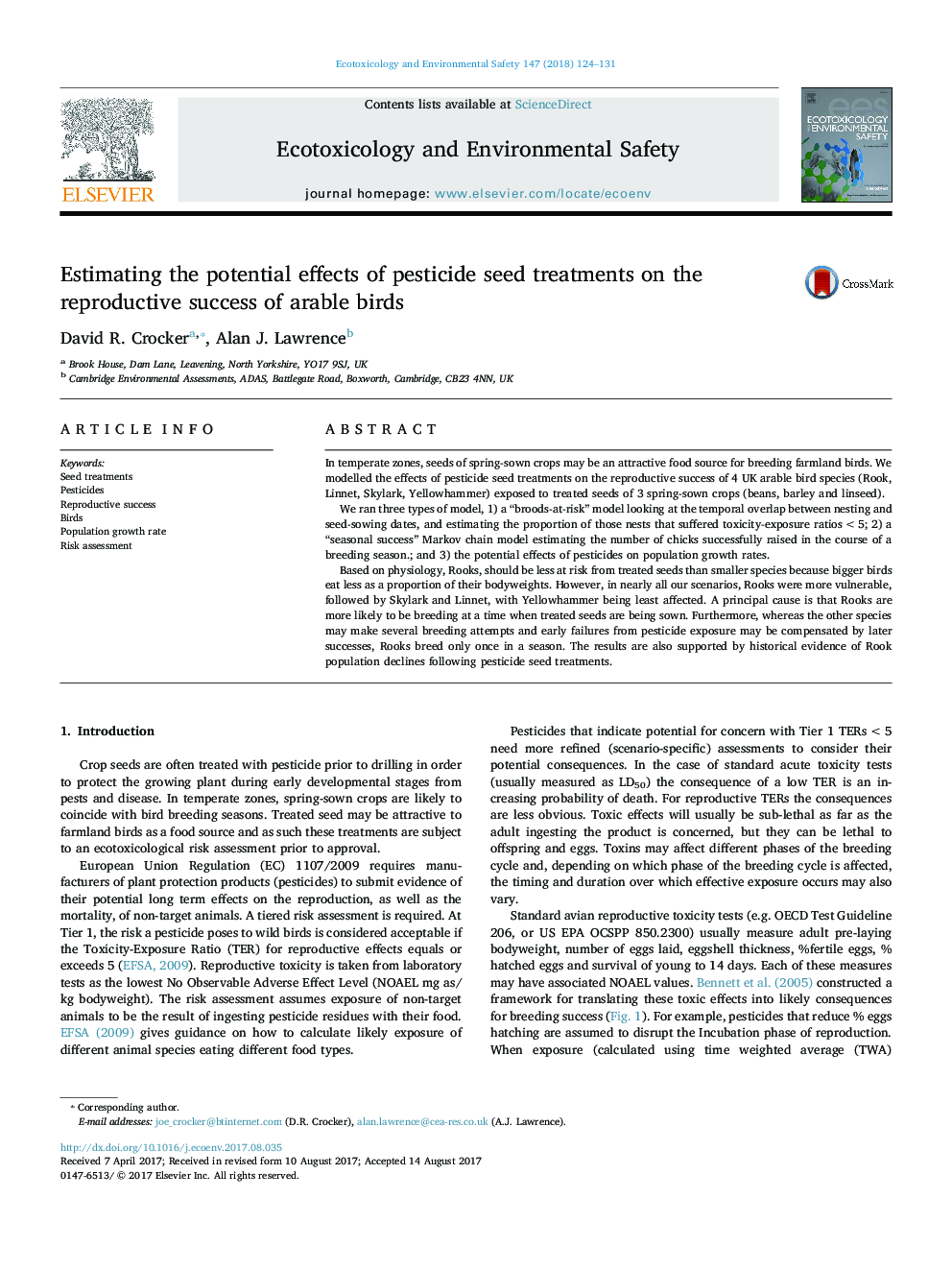| Article ID | Journal | Published Year | Pages | File Type |
|---|---|---|---|---|
| 5747797 | Ecotoxicology and Environmental Safety | 2018 | 8 Pages |
Abstract
Based on physiology, Rooks, should be less at risk from treated seeds than smaller species because bigger birds eat less as a proportion of their bodyweights. However, in nearly all our scenarios, Rooks were more vulnerable, followed by Skylark and Linnet, with Yellowhammer being least affected. A principal cause is that Rooks are more likely to be breeding at a time when treated seeds are being sown. Furthermore, whereas the other species may make several breeding attempts and early failures from pesticide exposure may be compensated by later successes, Rooks breed only once in a season. The results are also supported by historical evidence of Rook population declines following pesticide seed treatments.
Related Topics
Life Sciences
Environmental Science
Environmental Chemistry
Authors
David R. Crocker, Alan J. Lawrence,
